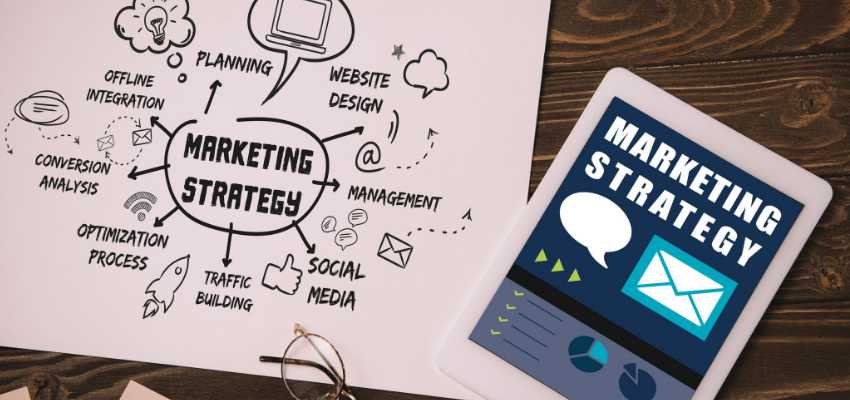Show:
Effective Digital Marketing: Strategies to Attract and Engage Visitors
Your website design plays a pivotal role in shaping first impressions and driving visitor engagement. With sound strategies and best practices, you can create an experience that effectively attracts your target audience and compels them to take action. This article explores key principles and trends in website design, from understanding user psychology to leveraging cutting-edge features that help your brand make meaningful connections.

Getting Clear on Goals and Audience
Before diving into design details, it’s essential to get clear on your website goals and intended visitors. Key questions to consider:
- What actions do you want visitors to take? Make purchases, sign up for newsletters, schedule appointments, etc.? Define your ideal conversion funnel.
- Who are your primary and secondary audiences? Detail visitor demographics, interests, pain points, and motivations.
- What value will your website provide? How will you solve problems, educate, entertain, or otherwise deliver value to visitors?
With a solid grasp of direction, you can strategically craft website content and features tailored for relevance and impact.
Optimizing for Key Pages and User Flows
Consider the critical pages visitors will access and key paths to drive them through conversion processes. This includes:
- Homepage – Sets the tone and quickly communicates brand purpose and value.
- Services/Products – Showcase details on offerings with compelling sales messaging.
- Contact – Enable visitors to easily reach out with questions or requests.
- Pricing – Present packages/tiers aligned to each buyer persona.
- Sign-Up/Purchase – Frictionless paths guiding visitors through conversions.
Map out these vital pages and user flows between them to maximize clarity and conversions through design optimization.
Understanding the Psychology of Attraction and Trust
Leveraging principles of human behavior, perception, and decision-making allows you to create instinctively appealing designs. Tactics include:
Visceral Triggers
High contrast colors, dramatic typography, and bold graphics grab attention while clean space and balance establish trust. Using design psychology elements strategically amplifies your messaging and brand personality.
Social Proof
Features like client logos, testimonials, and review stars tap into the safety of consensus, building credibility.
Reciprocation and Consistency
Offering free tools, blog content samples or guide downloads gets visitors invested while email remarketing and personalized recommendations leverage existing familiarity to drive ongoing engagement.
Incorporating these and other evidence-backed techniques tailors sites for intuitive navigation, comprehension, and emotional resonance.
Optimizing for Mobile and App Experiences
With over 60% of web traffic now via mobile devices, ensuring website accessibility and ease of use for phone visitors is non-negotiable. Tactics involve:
- Responsive design automatically adjusts layouts for seamless mobile interactions
- Minimal required zooming, tapping, or scrolling for key pages
- Streamlining forms and CTAs for touch interfaces
- Accelerated page speeds through compressed file sizes
Uniformly stellar web experiences across devices build engagement and trust in the digital era.

Crafting an Intuitive Site Architecture
Clean, consistent navigation schemes based on user thought patterns and goals enable effortless interactions. Best practices:
- Top and sidebars providing context-aware options
- Category groupings aligned to visitor needs
- Prominently featured calls-to-action guiding visitors through key processes
- Predictive search anticipating misspellings or alternative terminology
- Simplified layouts, minimal required scrolling, and hidden navigation on lower-priority pages
Thoughtfully constructed information hierarchies keyed to audience priorities manifest seamless, almost invisible site architecture.
Optimizing Page Speed and Performance
With 53% of mobile site visitors abandoning pages taking over 3 seconds to load, website speed carries tangible conversion consequences. Enhancements involve:
- Minifying code, compressing images and media
- Asynchronous asset loading
- Caching repeat content
- Offloading scripts to CDNs
- Lightweight image formats like WebP
Delivering dynamic experiences at a lightning pace drives visitor persistence and satisfaction today.
Personalization – Tailoring Experiences Through Design
Real-time adaptations responding to demonstrated visitor interests include:
- Behavioral targeting features – promoting related content based on current page views
- Geo-aware directives – spotlighting nearby stores, events, and specials
- Role or persona-based segmenting – tailoring messaging and offers by category
- Predictive site search and content recommendations anticipating associated needs
- Integrations with marketing automation platforms – customizing interactions based on historical data
The path to maximizing relevance and conversions involves contextual, individual-level website personalization at scale.
A Data-Driven Approach with Testing and Optimization
Leveraging visitor usage analytics allows you to continually experiment with and refine page design elements. This includes:
- A/B/n testing headline, body, and visual variants
- Monitoring scroll depth, click tracking, and goal completions identifying friction
- User surveys and session replays gathering qualitative visitor feedback
- Iterating page templates based on highest-performing combinations
- Expanding styles and layouts achieving results across full site
Letting data insights direct design decisions takes the guesswork out of engagement optimization.
Dynamic Experiences – Crafting “Living” Websites
Incorporating interactive features brings sites to life while highlighting unique value. Options include:
- Product configurators
- Live inventory lookups
- Interactive sizing or compatibility guides
- Updating progress trackers
- On-demand video and chat integrations
- Direct communication channels
Thoughtfully selected dynamic modules can captivate while facilitating more meaningful brand connections through conveying singular differentiation.
The Rise of Augmented and Virtual Experiences
Immersive technologies offer new dimensions for visitor engagement:
- Augmented reality product previews
- Enhanced site imagery via 3D and parallax effects
- First-person interactive content sequences
- Gamified and competitive site interactions
As AR/VR headsets and 3D spatial web adoption grow, their creative applications for deepening website visitor relationships present game-changing potential still in the early innings.
Optimized Content Structure, Delivery, and SEO
While design establishes first impressions, content keeps visitors actively engaged. Key elements:
- Scannable formatting – section headers, highlights, and multimedia
- Conversational, audience-aligned tone and vocabulary
- Unique, relevant perspectives addressing searcher interests
- Keyword mapping and metadata optimization
Setting content hierarchy while aligning topics to audience needs and search visibility ensures sticky interactions that convert.

The Evolving Role of Websites As Digital Ecosystem Hubs
Modern websites increasingly serve as launchpads centralizing access across the customer journey through:
- Integrations with eCommerce marketplaces
- Direct links to related mobile apps
- Consolidated logins to web apps like project trackers or document signers
- Embedded loyalty programs
- Unified access to online community forums
As digital experiences fragment across channels, unified websites maintaining contextual continuity hold amplifying importance for ongoing engagement and conversions.
Evaluating Technology Partner Capabilities
Given the multifaceted, data-driven discipline website building has evolved into, partnering with specialized digital marketing agencies with demonstrated optimization expertise pays dividends through accelerated growth.
When assessing provider capabilities look for:
- Evidence of technical specialization – relevant coding languages, content production skill sets, and analytics fluency
- Commitments to continual platform enhancements and feature expansions
- Tailored engagement models aligning interests – performance pricing, long-term partnerships
Choosing growth-focused technology experts as allies unlocks the full potential of goal-aligned website design.
Conclusion
An effective website design requires much more than just visual appeal to drive real business success. By taking a strategic approach grounded in your goals, audiences, and desired conversions, you can craft experiences that intuitively guide visitors to meaningful action through relevance and resonance.
As digital innovation accelerates across immersive technologies and personalization, the possibilities for websites to attract and compel engagement continue expanding exponentially. By testing new features aligned to consumer psychology while optimizing based on performance data, you can ensure your site design remains ahead of the curve.
If tackling these multifaceted optimization challenges in-house feels overwhelming, partnering with an experienced digital marketing agency brings access to specialized expertise and technology capabilities that can elevate your website to the next level.
The modern website represents your brand’s digital epicenter and the primary vehicle for delivering value, building connections, and fueling growth. With user-centric design and innovation, you can transform static sites into dynamic hubs that continually convert and re-engage visitors over the long term. By keeping site design aligned with emerging trends and audience needs, you drive tangible business success through the enhanced experiences and capabilities exceptional website design delivers.

 Return to Previous Page
Return to Previous Page








